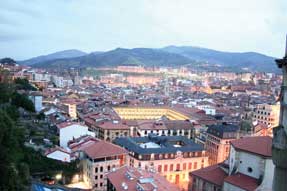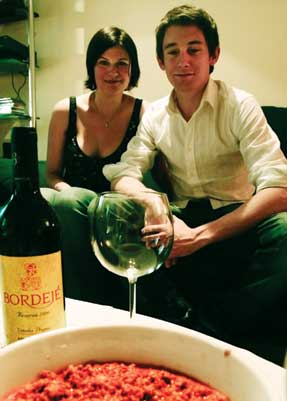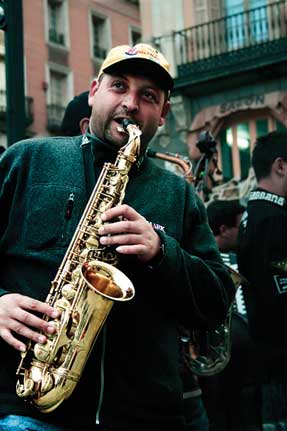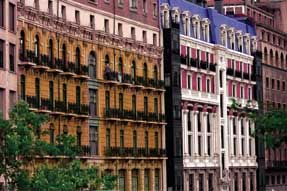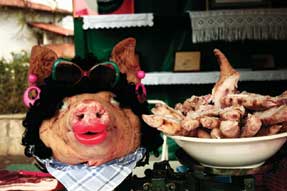| Don Diego Lopez Da Hora V probably stood very close to where we were, on the banks of the Rio Bilbao when he decided to establish a city, and named it Bilbao. On the other side of the river at that time, in 1300 AD was a fishing settlement, later named old Bilbao. The legacy continued and still there is an old Bilbao, and Bilbao, the capital of the famous Basque Country of Spain.
What brought me to Bilbao, unlike its tourists, was not an interest in its post modern buildings and famous pintxos. I was attracted to its people with their close attachment to their homes, with last names like Bengoetxea, “the house of further down,” Goikoetxea, “the house above,” Landaburu, “top of the field,” Errekondo, “next to the stream,” Elizalde, “by the church,” Mendizabal, “wide hill,” Usetxe, “house of birds,” Ibarretxe, “house in the valley” and others. The only Basque person I knew was an acquaintance I met during an earlier travel, who had invited us over to show off his homeland, which he believed was the “coolest place with the coolest people in Spain”.
I arrived in Bilbao with my fiancé by bus from the western side of the country. The first thing we noticed was there were two names for everything. The Basque language is given the same treatment as Spanish, unlike in the Franco era when the Basque language and identity were suppressed. Our friend greeted us at the terminal and declared “Let’s walk!”
I found that walking within the city is the best way to enjoy and absorb the diverse architecture and fragrance of the tapas and pintxos emanating from the small bars. We walked by the Rio Bilbao that flows through the city like the curves of a Mediterranean snake. Its north end flows through the newer and vibrant part of the city, the southern curves around the older and traditional Bilbao with its nostalgic buildings and narrow roads.
On one of the bends of the Rio Bilbao, in the southern part of the city, stood a rusting building, in what appeared like a blend of communist and colonial architecture. Without any title or number on its doors, it found its identity in this neglected neighborhood as the government building next to the river. The buildings around it were 6-7 stories, apartments with small bars and shops on their ground floors. The colors and the ambience of the place seemed like from a time capsule. In 1983 floods devastated several iconic structures like the
cathedral of the Santiago. Following the repair of those prominent buildings a general trend started that has led to a very colorful and systemic urban landscape.
Moving northward along the river, the city changes its shape. Post medieval, flat buildings, give way to 20th century multi storied industrial apartments, haute couture shopping malls, metro entrances and finally the Guggenheim Museum.
“Whether you like modern art or not, you are gonna like the Guggenheim,” said my host. Covered with splendorous 30,000 sheets of titanium, the museum became Basque’s primary tourist attraction overnight. An enormous atrium, more than 150 feet high, connects 15 galleries. Following its completion in the late 1990s, it put Bilbao on the international map. The Arcelor Mittal Gallery (yes, we are talking Lakshmi Mittal here) is a permanent exhibit of disorienting art made of huge steel sheets encircling each other. Once one walks through the iron art, the sense of direction and location is lost. I thought looking at the structure of the building itself was disorientating with its sliding walls merging into each other. A guide said, “You may divide Bilbao’s time line in BG and AG.” Which I reckoned was before and after Guggenheim.
In the Basque spirit, friends of friends extended invitations for food and drinks. The gourmet Basque food was not only more diverse and colorful than the rest of the country; it was also exceedingly interesting in the form of food clubs, where men gather to cook and enjoy their own food. Until recently, women were only allowed in one day in the year. The cooks prided themselves on the art of making pintxos, which is a small slice of bread on which various ingredients are held with a stick, which gives the food its name.
Our next destination in Spain was San Sebestian, or Donostia in Basque. As we left Bilbao, I saw its river flow with us along the road. I wondered if I would ever be able to compare Bilbao with any other place on earth.
|



